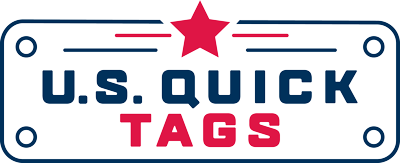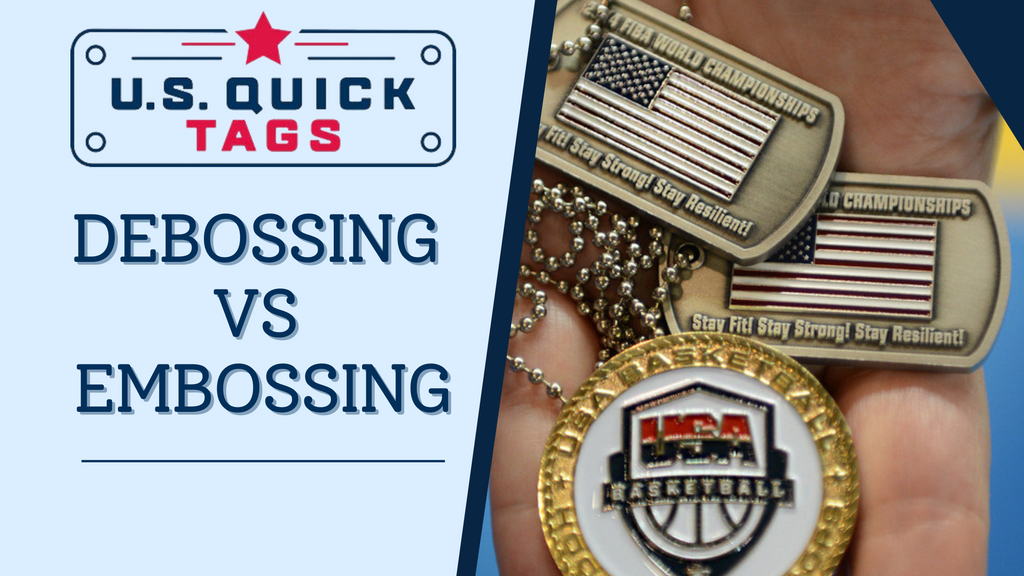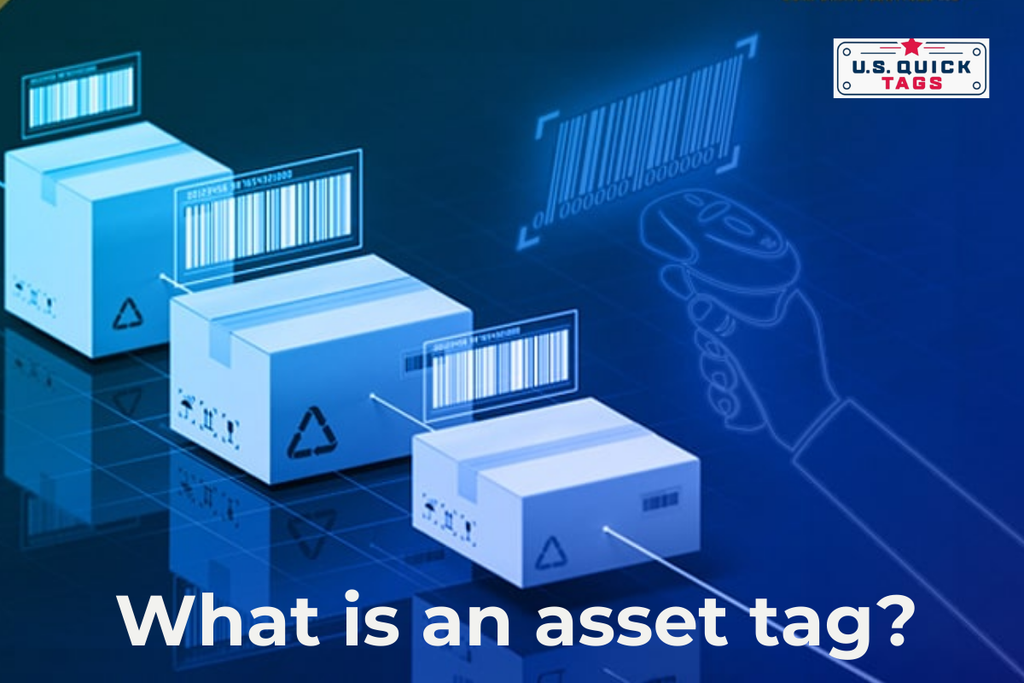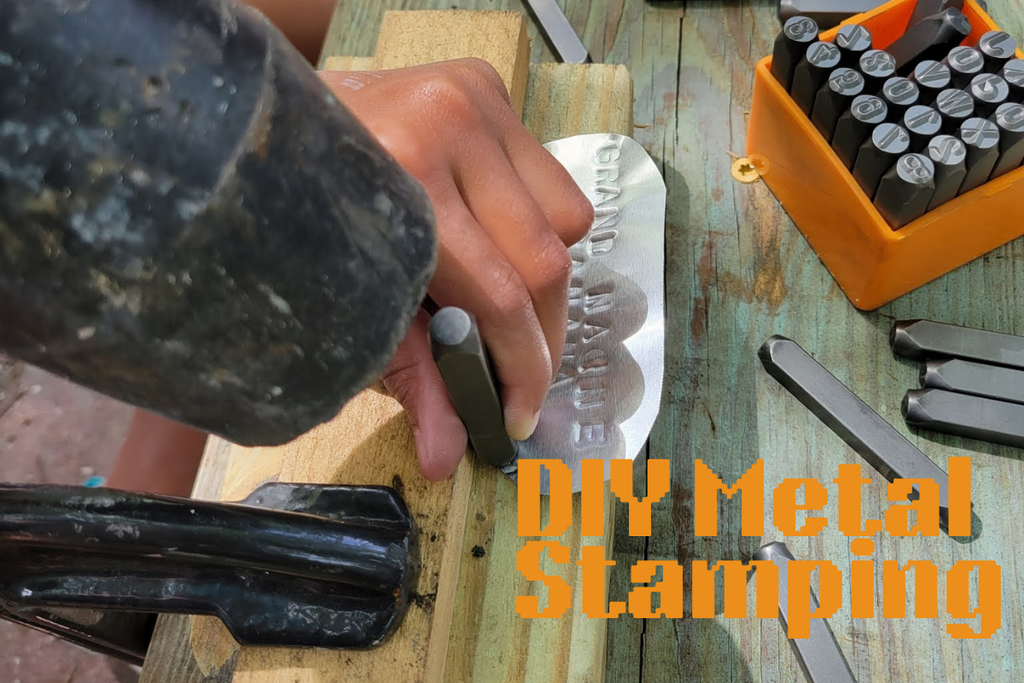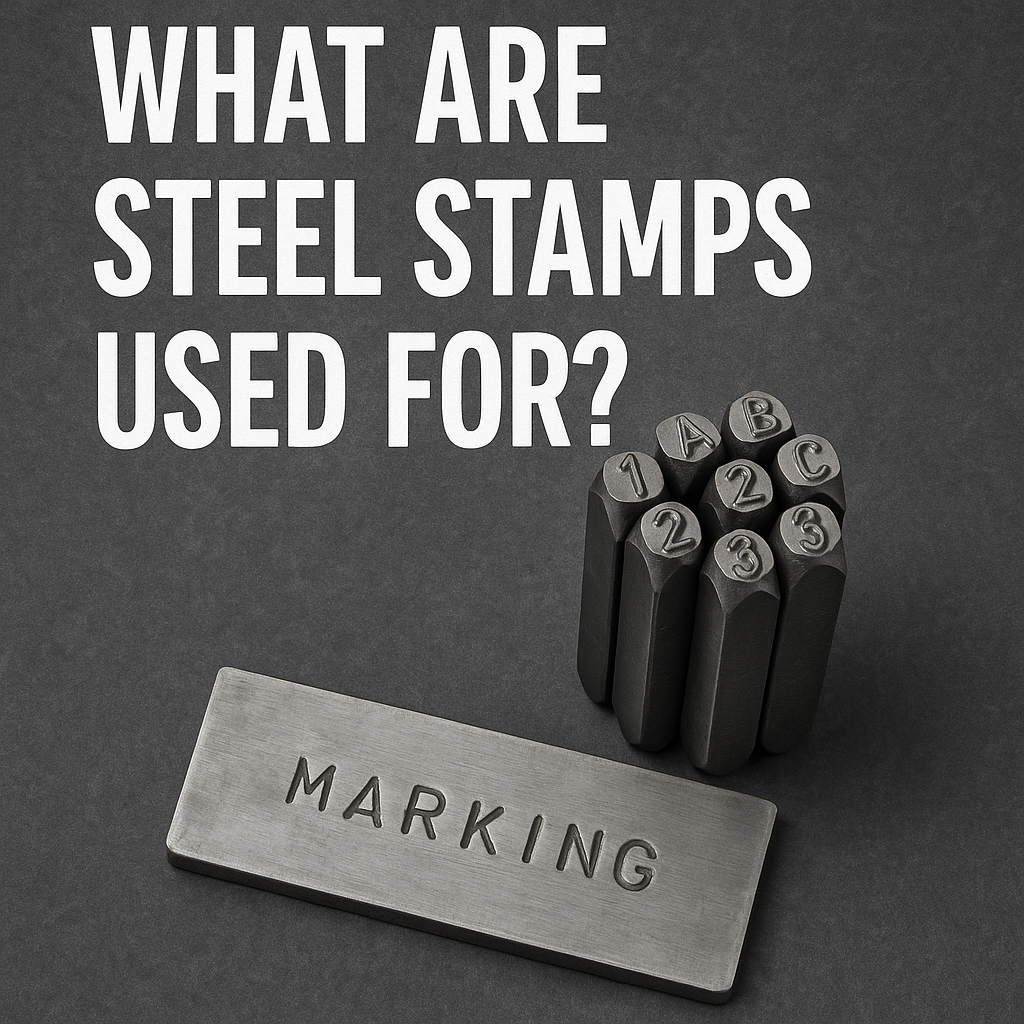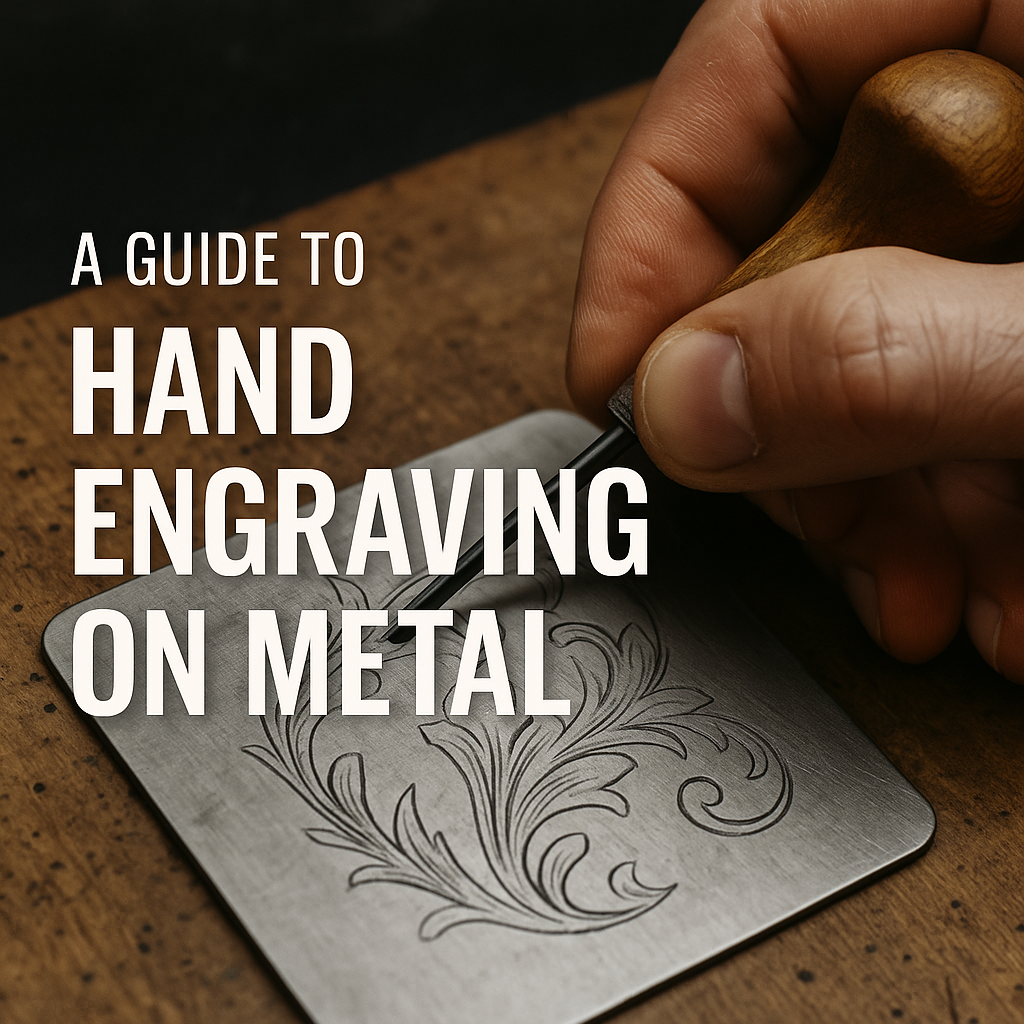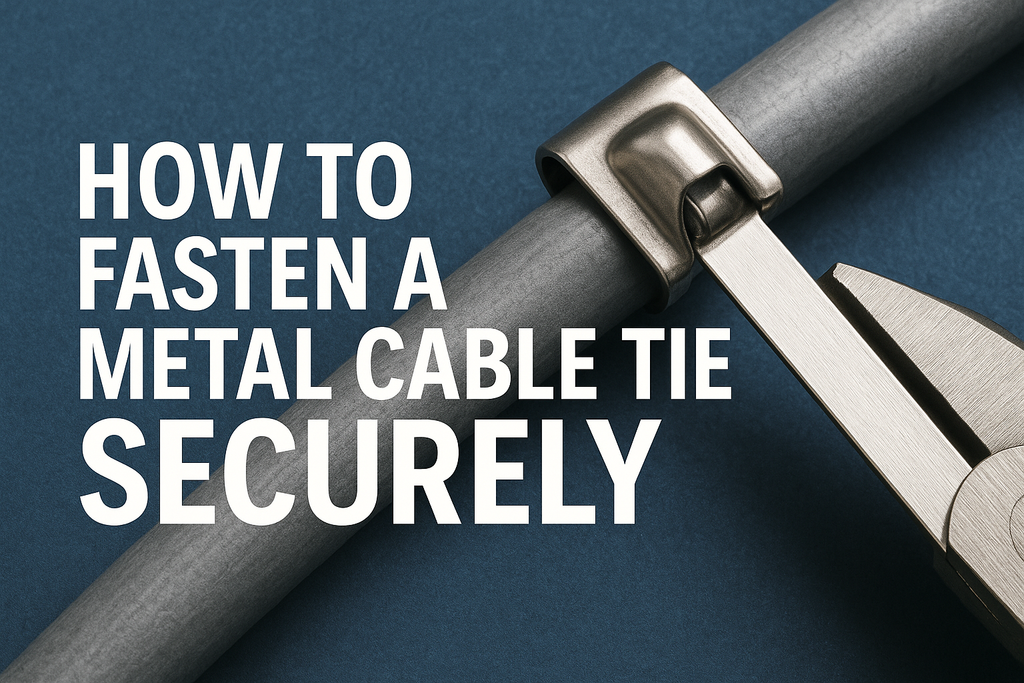Metal Debossing VS Embossing: What's The Catch?
- USQuickBlogs
- 28 Jun, 2023
Metal Debossing VS Embossing
Blank metal ID tags play a crucial role in various industries, serving as durable and visible means of identification. When it comes to creating these tags, two popular techniques stand out: metal debossing and metal embossing.
Metal debossing involves creating indented designs on the surface of the tag, while metal embossing creates raised designs. Choosing the right technique is vital as it directly impacts the identification tags' durability, legibility, and aesthetic appeal.
In this blog, we will delve into the intricacies of metal debossing and embossing, highlighting their differences, benefits, and factors to consider to help you make an informed decision when selecting the appropriate technique for your print projects and blank metal ID tags.
What Is Debossing?

Debossing is a printing technique that involves indenting an image or design into a surface in such a way as to cause depressions in it, creating depressions lower than its surrounding area and producing an appealing tactile surface with raised indents that give an elegant and sophisticated appearance.
This effect is used on business cards, wedding invitations, stationery, product packaging, materials, and other printed items for an upscale and sophisticated appearance.
Understanding Metal Debossing
Metal debossing is a technique used to create indented designs on metal surfaces. It works by pressing the metal material to create a depressed or engraved design. Here's how it's done:
The design or text is prepared either on a computer or by hand. Then, a print piece or special die is made with the reverse impression of the design. The die is usually made from hard materials like brass or steel.

After the debossing process, any rough edges or extra material are removed to create a clean and polished design on the metal tag.
Metal debossing has some benefits for ID tags. The indented design makes the tags more durable, as they are less likely to get scratched or fade. The engraved text or design is easy to read because it stands out from the surrounding metal. Debossed metal tags have a professional and stylish look, making them a great choice for many applications where durability and appearance matter.
Unveiling Metal Embossing Process

Metal embossing is a technique used to create raised designs on metal ID tags. Instead of pushing the metal plate down like in debossing, the embossing process involves pushing the metal up to make a raised design on the surface.
To emboss metal, a few steps are followed. First, the desired embossing designs or texts are prepared using a computer or by hand. Then, a die is made from metal or a hard material like brass or steel. The die has a design with raised elements.
The die presses into the stock like a stamp and slightly raises images of the paper of your print piece. The die can be single-level or multi-level, where a single-level raises your image to one consistent height or depth, and a multi-level creates a more complex emboss or deboss.
The blank metal ID tag is placed on a flat surface, and the metal die is aligned with it. Pressure is applied to the die, pushing the metal plates up and transferring the raised ink design onto the tag. After embossing, any extra material or rough edges are carefully removed, leaving a clean and polished raised design on the metal tag.
Just like embossing, you can leave the debossed area untouched or fill it in with ink or foil stamping. The raised area can then have ink or foil applied to it for added effect, or it can be left unprinted or unfoiled (i.e., known as a blind emboss).
The most effective embossed pieces use a detailed die and heavier paper stock to highlight the depth and detail of the embossed image. Metal embossing has some advantages for blank metal ID tags.
The raised design makes the tags more noticeable and easier to read. It also protects the embossed design from rubbing or scratching off easily. Embossed metal tags can be customized with detailed patterns, logos, and different designs, allowing for personalization and branding opportunities.
Comparing Metal Debossing and Embossing Techniques

Embossing and debossing are two distinct techniques used to create different visual effects on metal surfaces. Here's a comparison between the two techniques:
Direction of Design:
Debossing: The design or text is indented or sunken into the metal surface, creating a depressed impression.
Embossing: In embossing, the design or text is raised or elevated above the metal surface, creating a raised impression.
Visual Impact:
Debossing: Debossed designs have a subtle and elegant appearance, with the design recessed into the metal surface, offering a tactile feel.
Embossing: Embossed designs have a bold and prominent appearance, with the raised design standing out from the metal surface, providing a three-dimensional effect.
Durability:
Debossing: Debossed designs offer excellent durability as the indented design is less susceptible to wear, scratching, and fading over time.
Embossing: Embossed designs also provide durability, as the raised elements act as a protective layer, shielding the design from damage.
Legibility:
Debossing: Debossed designs may have slightly reduced legibility compared to embossed designs, as the recessed areas can cast shadows and may require additional lighting for optimal print visibility.
Embossing: Embossed designs generally offer high legibility, as the raised elements create contrast and catch the light, making the design more easily readable.
Aesthetic Appeal:
Debossing: Debossed designs exude a sophisticated and understated elegance, often favored for a more subtle and refined look.
Embossing: Embossed designs make a bold visual statement, adding texture and dimension to the metal surface, resulting in a striking, eye-catching appearance.
Customization:
Debossing: Debossing allows for various font styles, patterns, and intricate details, offering customization options for personalized logo designs.
Embossing: Embossing enables detailed and intricate designs, including logos, patterns, images, and textures, providing a range of customization possibilities.
Choosing between metal debossing and embossing techniques for blank metal ID tags depends on the desired visual impact, durability requirements, legibility, and aesthetic preferences. Considering these factors will help you make an informed decision to create durable and visually appealing identification tags that meet your specific needs.
Choosing the Right Technique for Blank Metal ID Tags
When choosing between metal embossing and debossing for blank ID tags or bulk military dog tags, it's crucial to consider various factors that align with your specific industry requirements, use cases, design preferences, intended usage, and budget constraints.

Here are some key considerations to help you make an informed decision and achieve the desired outcome:
- Industry Requirements:
- Consider the industry in which the ID tags will be used. Certain industries, such as healthcare or aerospace, may have specific regulations or standards regarding ID tag durability, legibility, and material requirements.
- Evaluate if any specific design or branding guidelines need to be followed to maintain consistency within your industry.
- Design Preferences:
- Evaluate the overall design aesthetic you wish to achieve. If you prefer a sleek and professional look with subtle text or design elements, debossing may be the better choice.
- If you desire a visually striking effect with raised and tactile text or design, embossing can add dimension and create a more impactful appearance.
- Intended Usage:
- Consider the environment and conditions in which the ID tags will be exposed. Durability becomes a crucial factor if they will undergo rough handling or potentially come into contact with harsh substances or chemicals. Debossed tags, with their indented text, tend to be more resistant to wear and tear.
- If the ID tags primarily serve as decorative or promotional items, embossing can offer an attractive and unique visual appeal.
- Budget Constraints:
- Evaluate your budget for the ID tag production. Debossing is generally more cost-effective than embossing, making it a suitable option if you have budget limitations.
- However, it's important to consider the long-term durability and potential need for replacement or maintenance when making decisions based solely on upfront costs.
- Recommendations for Achieving Desired Outcome:
- For a sleek and professional look with excellent legibility, choose to deboss. Opt for clear, bold fonts and designs that stand out against the metal surface.
- If you prioritize a visually striking and tactile effect, choose to emboss. Consider using fonts and designs with thicker lines and larger elements to ensure readability.
- Utilize sample tests to evaluate both techniques' legibility and overall appearance before committing to a larger production run.
- Consult with a reputable supplier or professional experienced in metal debossing and embossing to guide you through the process and provide recommendations based on your specific needs.
The ultimate goal is to create blank ID tags that effectively convey the necessary information while meeting your aesthetic preferences and industry requirements. By carefully considering factors such as industry standards, design preferences, intended usage, and budget constraints, you can decide between metal embossing and debossing for your next project, leading to a successful outcome for your blank metal ID tags.
Visit US Quick Tags now!
